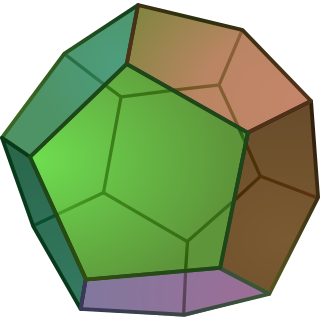Top Qs
Timeline
Chat
Perspective
Convex body
Non-empty convex set in Euclidean space From Wikipedia, the free encyclopedia
Remove ads
In mathematics, a convex body in -dimensional Euclidean space is a compact convex set with non-empty interior. Some authors do not require a non-empty interior, merely that the set is non-empty.

A convex body is called symmetric if it is centrally symmetric with respect to the origin; that is to say, a point lies in if and only if its antipode, also lies in Symmetric convex bodies are in a one-to-one correspondence with the unit balls of norms on
Some commonly known examples of convex bodies are the Euclidean ball, the hypercube and the cross-polytope.
Remove ads
Metric space structure
Write for the set of convex bodies in . Then is a complete metric space with metric
.[1]
Further, the Blaschke Selection Theorem says that every d-bounded sequence in has a convergent subsequence.[1]
Remove ads
Polar body
If is a bounded convex body containing the origin in its interior, the polar body is . The polar body has several nice properties including , is bounded, and if then . The polar body is a type of duality relation.
Remove ads
See also
- List of convexity topics
- John ellipsoid – Ellipsoid most closely containing, or contained in, an n-dimensional convex object
- Brunn–Minkowski theorem, which has many implications relevant to the geometry of convex bodies.
References
Wikiwand - on
Seamless Wikipedia browsing. On steroids.
Remove ads















